Maxwell Food Centre in Singapore: Quick Visiting Guide & Tips to Know Before You Go
Hawker centers, also known as food centers, are iconic in Singapore. These open-air complexes are filled with stalls selling a wide range of affordable, delicious, and authentic local dishes from different ethnic groups in Singapore. They were originally established as places to centralize street vendors who previously sold food along the roadsides into clean, regulated spaces. Since then, they have become a key part of Singapore’s food culture.
You can find hawker centers all over Singapore, from residential neighborhoods to city centers. Some of the famous ones are Maxwell Food Centre, Old Airport Road Food Centre, Lau Pa Sat, Newton Food Centre, and Amoy Street Food Centre. On our most recent trip to Singapore, we decided to visit Maxwell hawker center as we wanted to eat Hainanese chicken rice which this center is particularly well known for. Here’s what you need to know before visiting it.
Location
Maxwell Food Centre (Google Maps location) is easily accessible by public transportation and you can also walk there from key landmarks in the Chinatown area. Right across the street is the Buddha Tooth Relic Temple, one of Chinatown’s most famous attractions. Just a 10-minute walk away from Maxwell is Amoy Street Food Centre, another popular hawker center is Singapore.
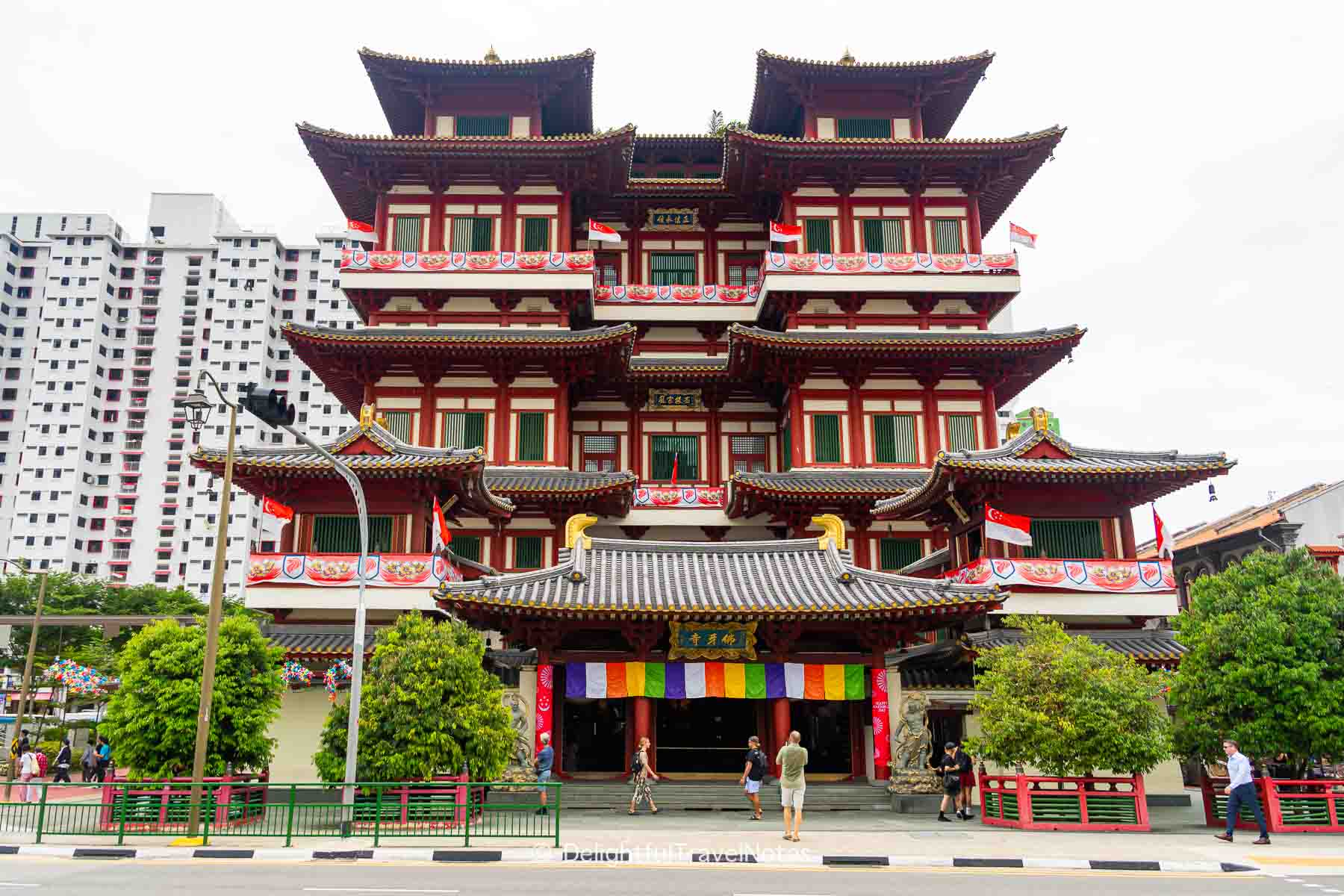
Maxwell is also near Singapore’s Central Business District (CBD), making it a popular lunch spot for office workers. This means it can get quite busy during weekday lunch hours as people from nearby offices flock to get affordable meals. If you want to avoid the crowd, try visiting during off-peak hours, like mid-morning before 11:30 AM or late afternoon. However, keep in mind that some stalls may close after lunch, so it’s a good idea to check the opening hours if you’re looking for a specific dish or stall.
Atmosphere
Maxwell is popular with both locals and tourists. As soon as you enter, you will be greeted with the lively atmosphere of the place, with rows of food stalls selling a variety of local specialties. If you haven’t set your mind on a specific dish before going, the sheer number of options may make choosing what to eat difficult.

The building complex is open-air so it can get quite hot. If you are not used to the heat and humidity in Southeast Asia, you may want to research beforehand and decide on the key dishes you want to try. After that, you can hang around a little longer to browse other options, which is exactly what we did.
Food Specialties
There is a diverse range of local dishes at Maxwell Food Centre with the most notable one being Hainanese chicken rice. 4-5 stalls at this center are dedicated to this iconic dish. Among them, Tian Tian Hainanese Chicken Rice is the most famous stall at Maxwell, but be prepared for long lines! Just a few stalls away from Tian Tian is Ah Tai Chicken Rice, which, according to my research, is just as good with a much shorter line.
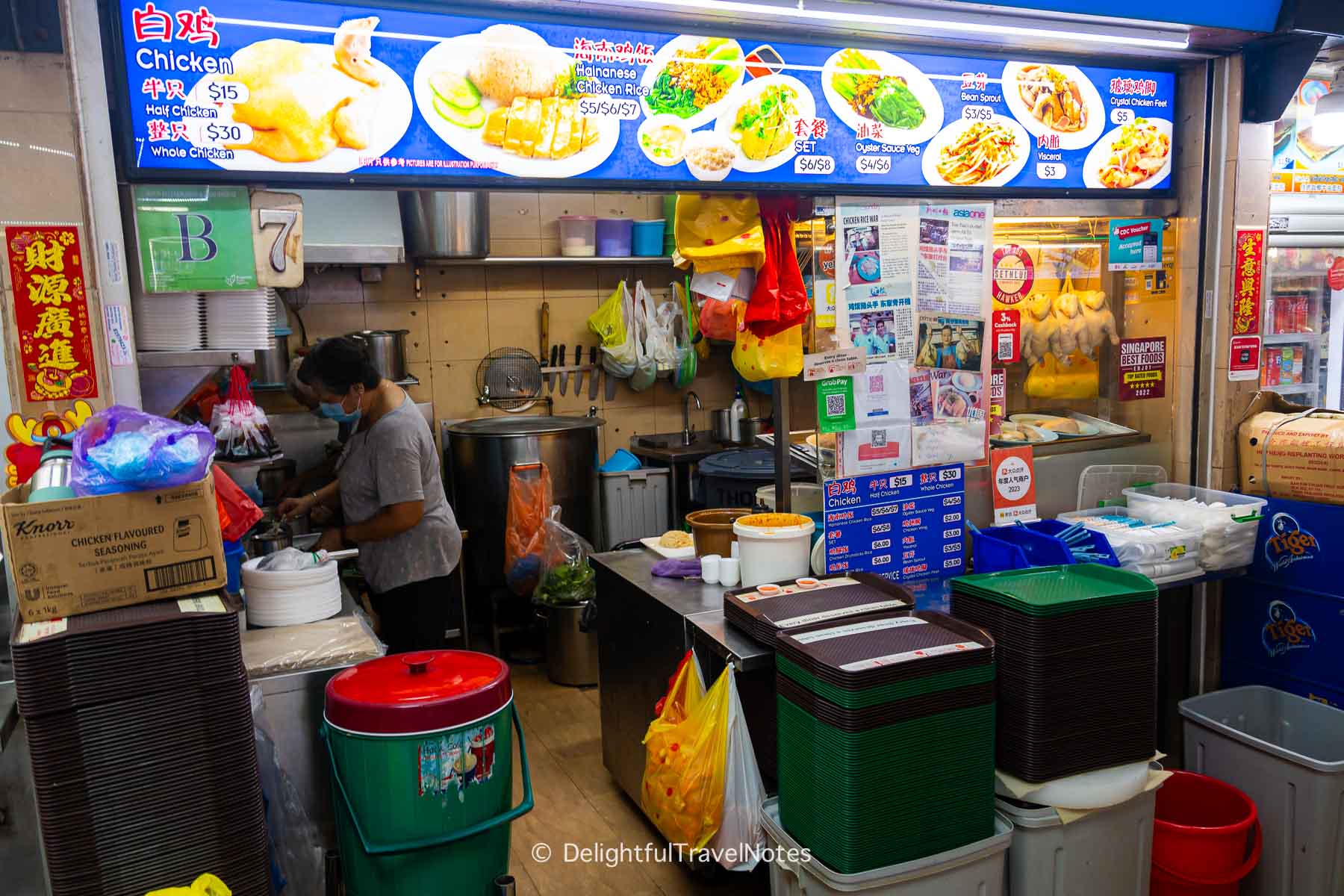
We ordered two sets of chicken rice which included rice, poached chicken, vegetables with oyster sauce and a small bowl of soup. Each set cost 8 Singapore dollars (SGD). The chicken was tender and juicy, lightly drizzled with a flavorful soy sauce and fragrant sesame oil. The rice was very fragrant, rich, and perfectly cooked. Our humble plate of chicken rice tasted delicious, better than what we tried at Chatterbox restaurant a few days later. I have a post about Hainanese chicken rice at Maxwell for more information.
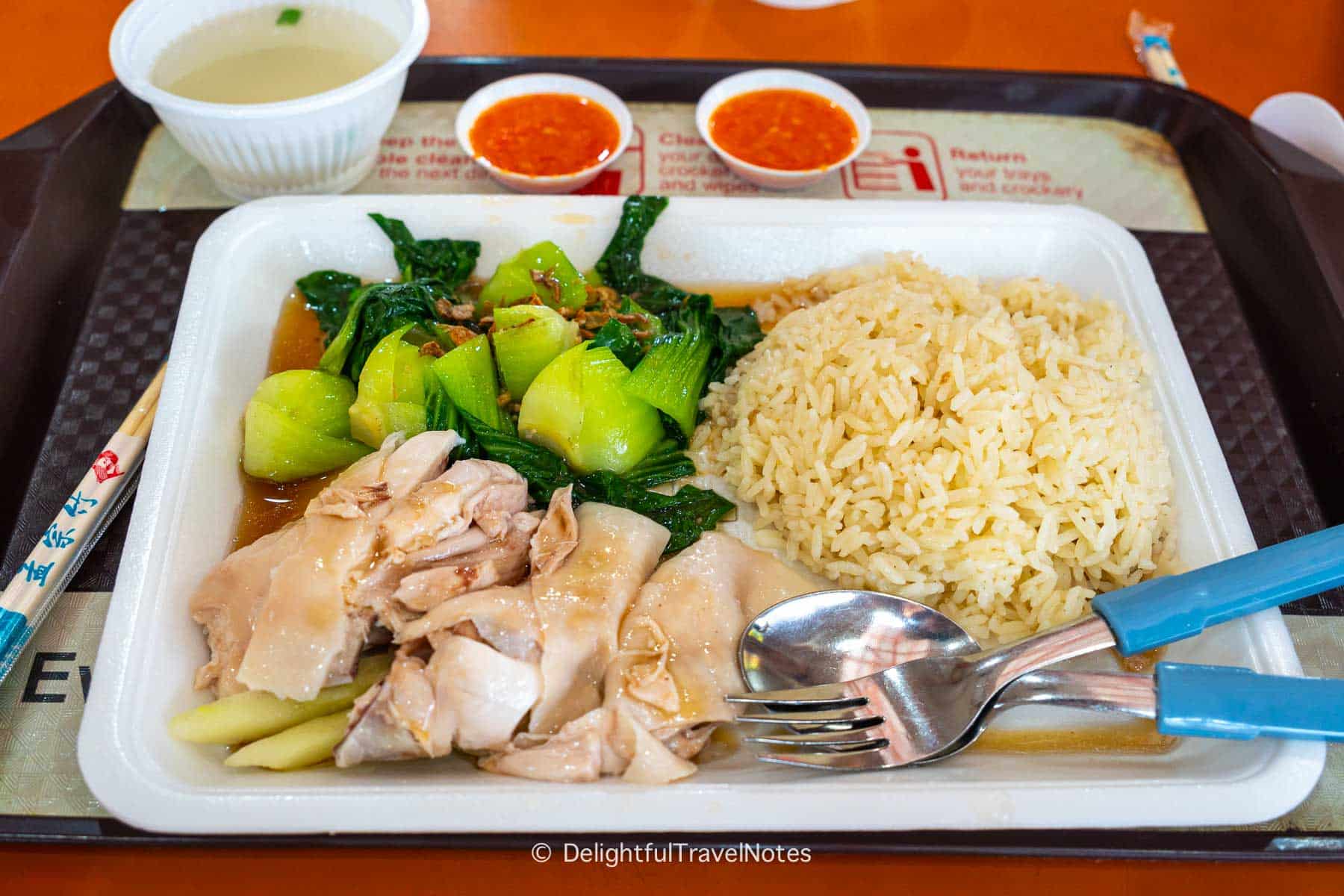
Besides chicken rice, we also spotted many other interesting dishes, such as Fuzhou fried oyster cakes and fish bee hoon. As we were quite full, we bought soy milk and beancurd pudding for dessert. In total, we spent a bit under 25 SGD for our lunch at Maxwell. Well, after eating at Maxwell and a few restaurants around Singapore this year, we definitely noticed a significant increase in prices compared to our previous trips.
Rules & Etiquette
Here are some general rules and etiquette to know before visiting Maxwell hawker center to help you navigate the experience smoothly.
Find a seat before ordering: it is common to secure a seat before you order food. You can leave small personal belongings like tissue packets or umbrellas to mark your spot. Singaporeans like to leave a tissue packet to “chope” (reserve) seats, so if you see one, it means the spot has been taken.
It can be difficult to find a table at Maxwell during peak hours. We visited around 1:00 pm and the place was still pretty busy. It is normal to share a table with strangers at hawker centers, but make sure to ask politely if the seats have been taken first before sitting down.
Bring some cash: most hawker stalls seem to only accept cash or local e-payment methods, so make sure to bring some small bills for your orders. You generally don’t need a lot of cash while traveling in Singapore. What we often do every trip is getting our tax refund in cash (unless it’s way more than a couple of hundreds of dollars) to use on the next trip.
Bring your own tissues or napkins: hawker stalls usually don’t provide napkins or tissues. We brought our own wet wipe sanitizers and tissues to wipe hands and clean up after eating.
Clean up after yourself and return trays after use: return your trays and dishes to the tray return stations after finishing your meal. There are several stations throughout the center. They also have signs on the tables to remind diners to help maintain the cleanliness of the space.
Final Thoughts
Overall, we recommend stopping by Maxwell Food Centre when visiting Singapore to experience the hawker food culture. The only negative thing during our visit was the use of so much single-use plastic, including styrofoam. We did see regular plates and bowls but depending on what you are getting, your food may come in plastic containers with disposable utensils.
I still think the concept of hawker centers is a brilliant initiative by Singapore government. Coming from Vietnam, we’ve got to see many downsides of unregulated street food culture, including low quality ingredients, poor food safety and hygiene practices, littering, and loss of tax revenues, just to name a few. I hope our country can take inspiration from the hawker centers in Singapore and implement similar solutions to address the issues in the near future.
If you found this article helpful, please consider sharing it on Pinterest! Thank you so much!
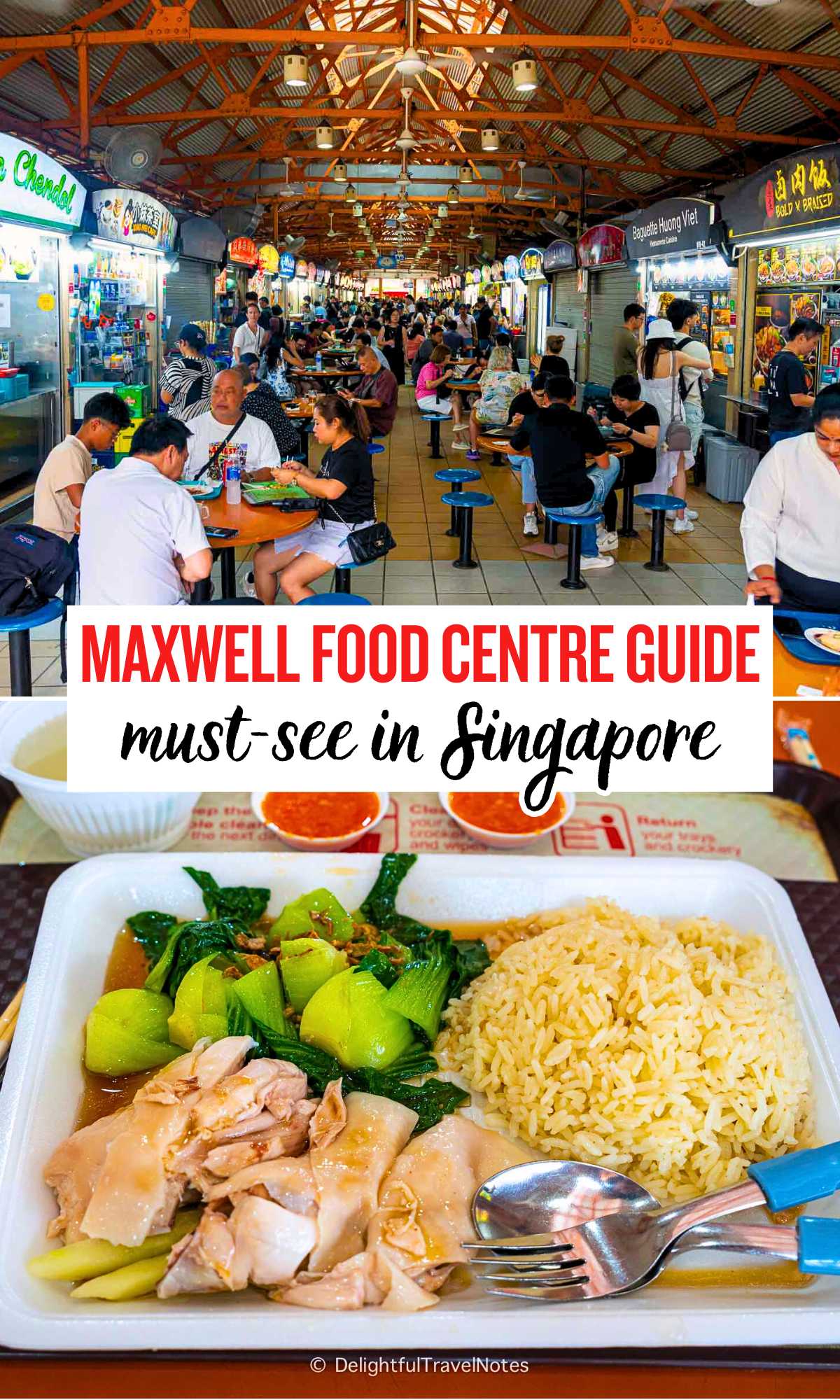
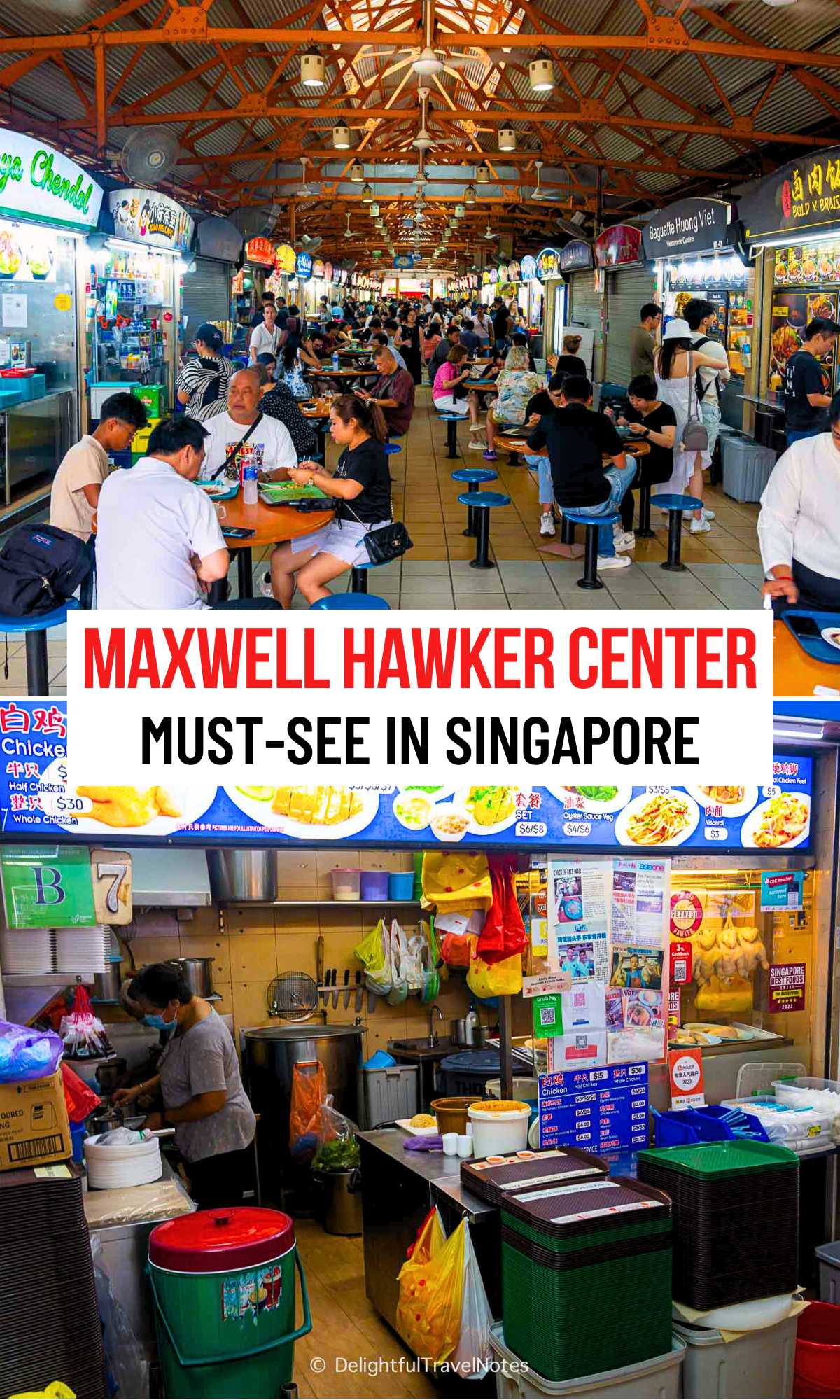

Explore More
Top Must-Try Restaurants in Hanoi – A Local’s Guide
Top 12 Best Vietnamese Restaurants in Ho Chi Minh City – A Local’s Guide
Best Places to Stay in Ho Chi Minh City for Tourists and Short-term Visitors